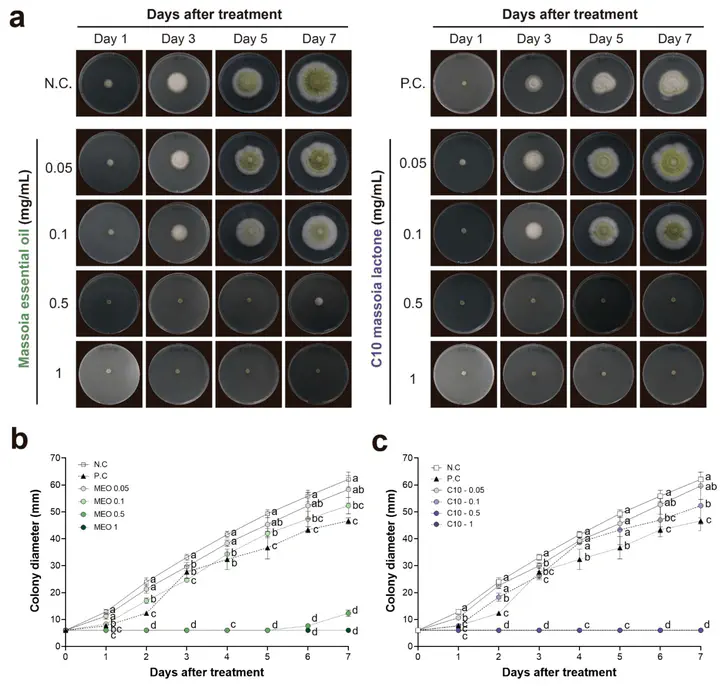Antifungal and Antiaflatoxigenic Activities of Massoia Essential Oil and C10 Massoia Lactone against Aflatoxin-Producing Aspergillus flavus

Abstract
Fungal infection and mycotoxin contamination are major hazards to the safe storage and distribution of foods and feeds consumed by humans and livestock. This study investigated the antifungal and antiaflatoxigenic activities of massoia essential oil (MEO) and its major constituent, C10 massoia lactone (C10), against aflatoxin B (AFB)-producing Aspergillus flavus ATCC 22546. Their antifungal activities were evaluated using a disc diffusion assay, agar dilution method, and a mycelial growth inhibition assay with the AFB analysis using liquid chromatography triple quadrupole mass spectrometry. MEO and C10 exhibited similar antifungal and antiaflatoxigenic activities against A. flavus. C10 was a primary constituent in MEO and represented up to 45.1% of total peak areas analyzed by gas chromatography–mass spectrometry, indicating that C10 is a major compound contributing to the antifungal and antiaflatoxigenic activities of MEO. Interestingly, these two materials increased AFB production in A. flavus by upregulating the expression of most genes related to AFB biosynthesis by 3- to 60-fold. Overall, MEO and C10 could be suitable candidates as natural preservatives to control fungal infection and mycotoxin contamination in foods and feeds as Generally Recognized As Safe (GRAS) in the Flavor and Extract Manufacturers Association of the United States (FEMA), and MEO is a more suitable substance than C10 because of its wider range of uses and higher allowed concentration than C10.